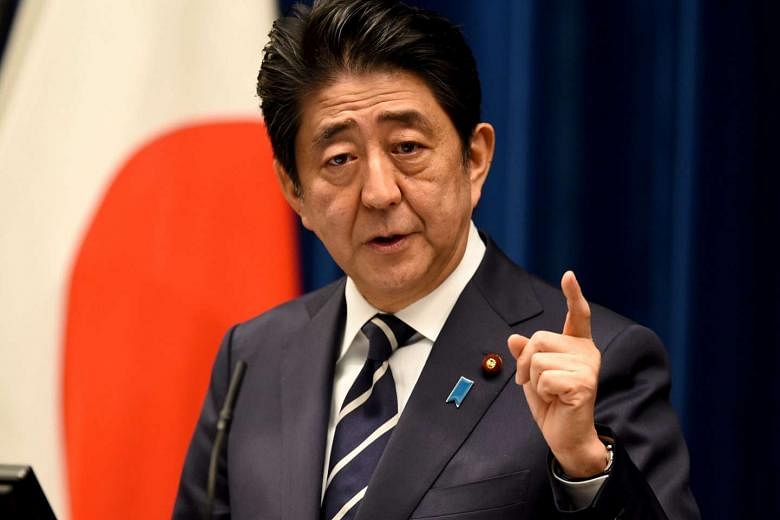In its editorial on Apr 27, the paper urges the government to review unfinished measures when working out a new strategy.
This year marks the fourth growth strategy - one of the major pillars of the Abenomics economic policy package - to be compiled.
To make the strategy function as primer for the Japanese economy, it is essential to reexamine the measures taken so far and accelerate the pace of reform.
The government's Council for Industrial Competitiveness has worked out an outline of the growth strategy, which the council will decide on next month.
The new strategy is characterised by its identification of 10 specific sectors that are expected to grow, such as artificial intelligence, health care, the environment and energy.
Creating added value totaling 30 trillion yen (S$364 billion) through the "4th industrial revolution" in which productivity would be enhanced dramatically via information and telecommunications technology, and expanding the market size of health care and medicine from 16 trillion yen to 26 trillion yen - by amply incorporating these numerical targets into the growth strategy, the government aims to realise a nominal gross domestic product of 600 trillion yen by 2020.
Citing the task of strengthening human resources as one of the priority measures in the growth strategy, Prime Minister Shinzo Abe said, "We'll provide opportunities for young people to change society and play an active role on the global scene."
For the Japanese economy to continue its development over the long run, despite a declining working-age population, it is extremely important to foster youthful human resources who will take on the challenge of technological innovation.
We can highly rate the government's proactive stance of setting ambitious goals in broad sectors.
But what matters most is the content and the effect of specific measures incorporated in the strategy.
Under the growth strategies carried out in the past, tangible results have been achieved in some areas.
For instance, the goal of increasing the number of foreign visitors to Japan to 20 million a year by 2020 was realised about five years earlier than originally planned.
Yet there is still a way to go with most of the regulatory reforms intended to create a business environment friendly to corporate activities and maximise the vitality of the private sector.
For instance, in employment reforms designed to enhance labor productivity, some proposals have yet to be realized, such as establishing a "post-hourly wage" system, in which wages can be decided in accordance with the actual results of work, rather than hours worked.
In the agricultural sector, organisational reforms of agricultural cooperatives have been implemented.
But less progress than expected has been made in such areas as having small plots of farmland consolidated and put into the hands of farmers willing to expand their farming activities, and in promoting private companies' entry into the farm sector.
In rankings regarding the ease of doing business compiled by the World Bank, Japan is ranked 24th among the 34 member countries of the Organisation for Economic Cooperation and Development.
This is a far cry from its target of being ranked third or higher among developed nations.
It has been pointed out that major reasons for Japan's low rank include its administrative procedures related to tax payment, permits and licenses, which are deemed to be more complicated than in other foreign countries.
Every time a growth strategy is revised, novel policy items added for the first time tend to draw attention.
On the other hand, it is problematic if steady efforts such as regulatory reforms, including simplifying procedures, remain at a standstill.
The government must sincerely listen to what the business community and others are calling for.
* The Yomiuri Shimbun is a member of The Straits Times media partner Asia News Network, an alliance of 22 newspapers.

